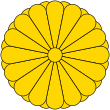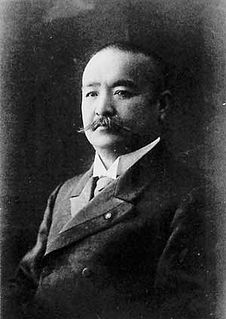 |
|---|
| This article is part of a series on the politics and government of Japan |
The Liberal Party (Japanese : 自由党, Jiyūtō) was a political party in Japan.
Japanese is an East Asian language spoken by about 128 million people, primarily in Japan, where it is the national language. It is a member of the Japonic language family, and its relation to other languages, such as Korean, is debated. Japanese has been grouped with language families such as Ainu, Austroasiatic, and the now-discredited Altaic, but none of these proposals has gained widespread acceptance.



